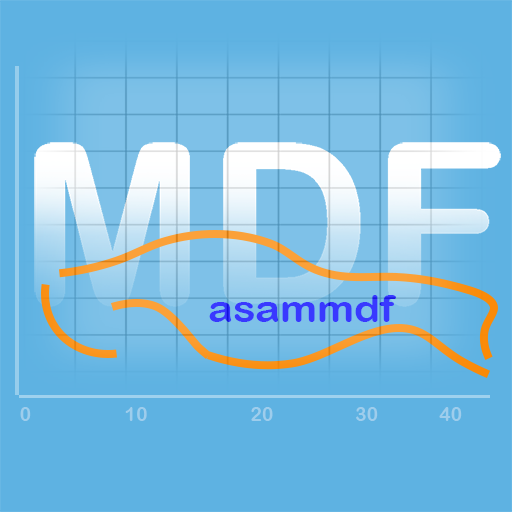asammdf is a fast parser and editor for ASAM (Associtation for Standardisation of Automation and Measuring Systems) MDF (Measurement Data Format) files.
asammdf supports MDF versions 2 (.dat), 3 (.mdf) and 4 (.mf4).
asammdf works on Python >= 3.6 (for Python 2.7, 3.4 and 3.5 see the 4.x.y releases)
| ! | Travis CI | Appveyor | CoverAlls | Codacy | ReadTheDocs |
|---|---|---|---|---|---|
| master |
| PyPI | conda-forge |
|---|---|
The main goals for this library are:
- to be faster than the other Python based mdf libraries
- to have clean and easy to understand code base
- to have minimal 3-rd party dependencies
-
create new mdf files from scratch
-
append new channels
-
read unsorted MDF v3 and v4 files
-
read CAN bus logging files
-
filter a subset of channels from original mdf file
-
cut measurement to specified time interval
-
convert to different mdf version
-
export to pandas, Excel, HDF5, Matlab (v4, v5 and v7.3),CSV and parquet
-
merge multiple files sharing the same internal structure
-
read and save mdf version 4.10 files containing zipped data blocks
-
space optimizations for saved files (no duplicated blocks)
-
split large data blocks (configurable size) for mdf version 4
-
full support (read, append, save) for the following map types (multidimensional array channels):
-
mdf version 3 channels with CDBLOCK
-
mdf version 4 structure channel composition
-
mdf version 4 channel arrays with CNTemplate storage and one of the array types:
- 0 - array
- 1 - scaling axis
- 2 - look-up
-
-
add and extract attachments for mdf version 4
-
handle large files (for example merging two fileas, each with 14000 channels and 5GB size, on a RaspberryPi) using memory = minimum argument
-
extract channel data, master channel and extra channel information as Signal objects for unified operations with v3 and v4 files
-
time domain operation using the Signal class
- Pandas data frames are good if all the channels have the same time based
- a measurement will usually have channels from different sources at different rates
- the Signal class facilitates operations with such channels
-
graphical interface to visualize channels and perform operations with the files
-
for version 3
- functionality related to sample reduction block: the samples reduction blocks are simply ignored
-
for version 4
- functionality related to sample reduction block: the samples reduction blocks are simply ignored
- handling of channel hierarchy: channel hierarchy is ignored
- full handling of bus logging measurements: currently only CAN bus logging is implemented with the ability to get signals defined in the attached CAN database (.arxml or .dbc)
- handling of unfinished measurements (mdf 4): warnings are logged based on the unfinished status flags but no further steps are taken to sanitize the measurement
- full support for remaining mdf 4 channel arrays types
- xml schema for MDBLOCK: most metadata stored in the comment blocks will not be available
- full handling of event blocks: events are transfered to the new files (in case of calling methods that return new MDF objects) but no new events can be created
- channels with default X axis: the defaukt X axis is ignored and the channel group's master channel is used
from asammdf import MDF
mdf = MDF('sample.mdf')
speed = mdf.get('WheelSpeed')
speed.plot()
important_signals = ['WheelSpeed', 'VehicleSpeed', 'VehicleAcceleration']
# get short measurement with a subset of channels from 10s to 12s
short = mdf.filter(important_signals).cut(start=10, stop=12)
# convert to version 4.10 and save to disk
short.convert('4.10').save('important signals.mf4')
# plot some channels from a huge file
efficient = MDF('huge.mf4')
for signal in efficient.select(['Sensor1', 'Voltage3']):
signal.plot()Check the examples folder for extended usage demo, or the documentation http://asammdf.readthedocs.io/en/master/examples.html
http://asammdf.readthedocs.io/en/master
Please have a look over the contributing guidelines
If you enjoy this library please consider making a donation to the numpy project.
Thanks to all who contributed with commits to asammdf:
- Julien Grave JulienGrv
- Jed Frey jed-frey
- Mihai yahym
- Jack Weinstein jackjweinstein
- Isuru Fernando isuruf
- Felix Kohlgrüber fkohlgrueber
- Stanislav Frolov stanifrolov
- Thomas Kastl kasuteru
- venden venden
- Marat K. kopytjuk
- freakatzz freakatzz
asammdf is available on
- github: https://github.com/danielhrisca/asammdf/
- PyPI: https://pypi.org/project/asammdf/
- conda-forge: https://anaconda.org/conda-forge/asammdf
pip install asammdf
# or for anaconda
conda install -c conda-forge asammdfasammdf uses the following libraries
- numpy : the heart that makes all tick
- numexpr : for algebraic and rational channel conversions
- wheel : for installation in virtual environments
- pandas : for DataFrame export
- canmatrix : to handle CAN bus logging measurements
- natsort
optional dependencies needed for exports
- h5py : for HDF5 export
- xlsxwriter : for Excel export
- scipy : for Matlab v4 and v5 .mat export
- hdf5storage : for Matlab v7.3 .mat export
- fastparquet : for parquet export
other optional dependencies
- cChardet : to detect non-standard unicode encodings
- PyQt5 : for GUI tool
- pyqtgraph : for GUI tool and Signal plotting
- matplotlib : as fallback for Signal plotting

